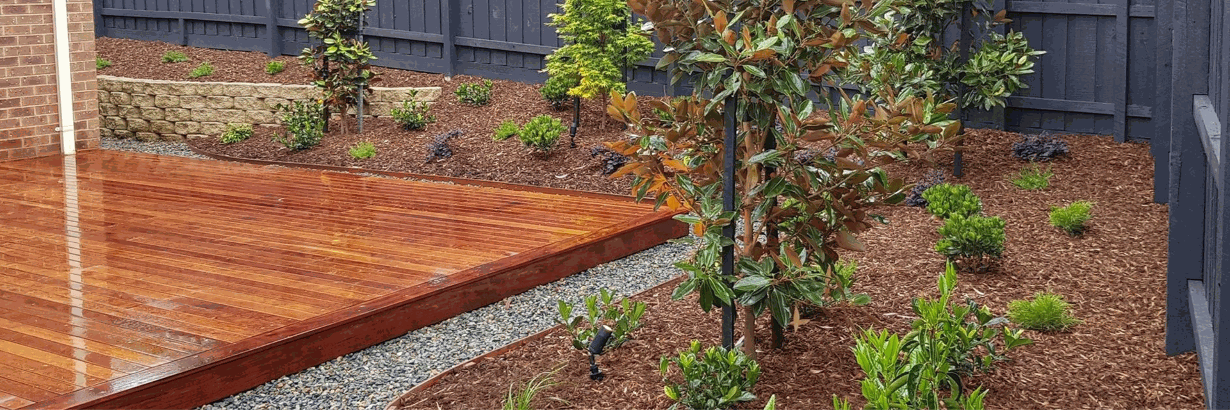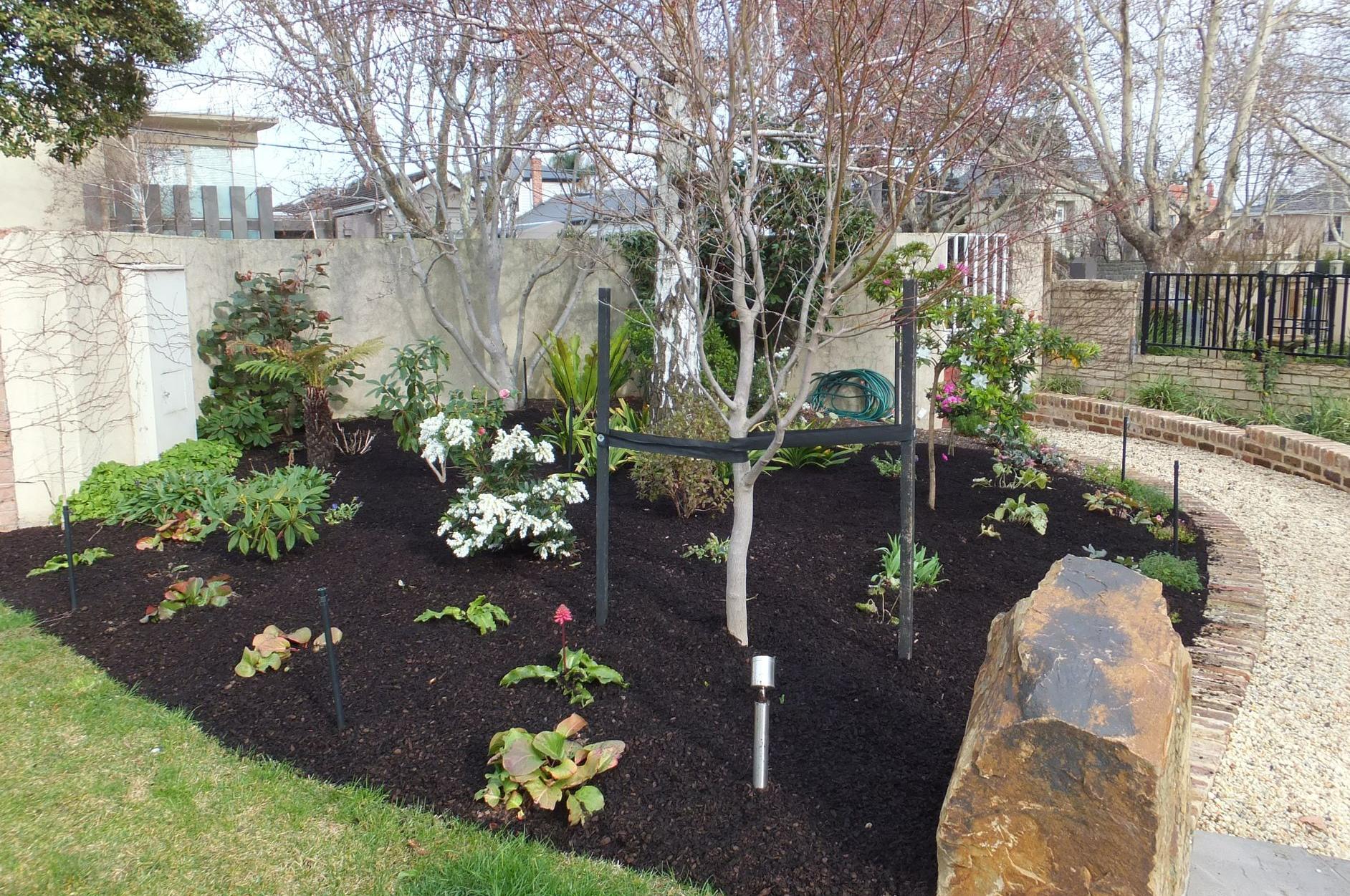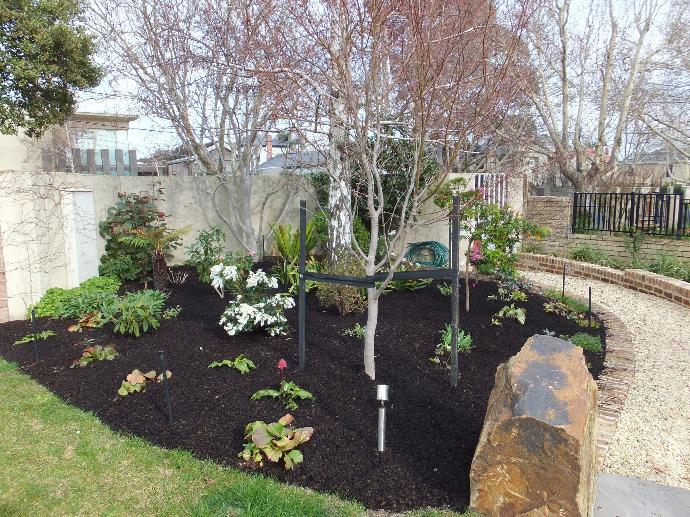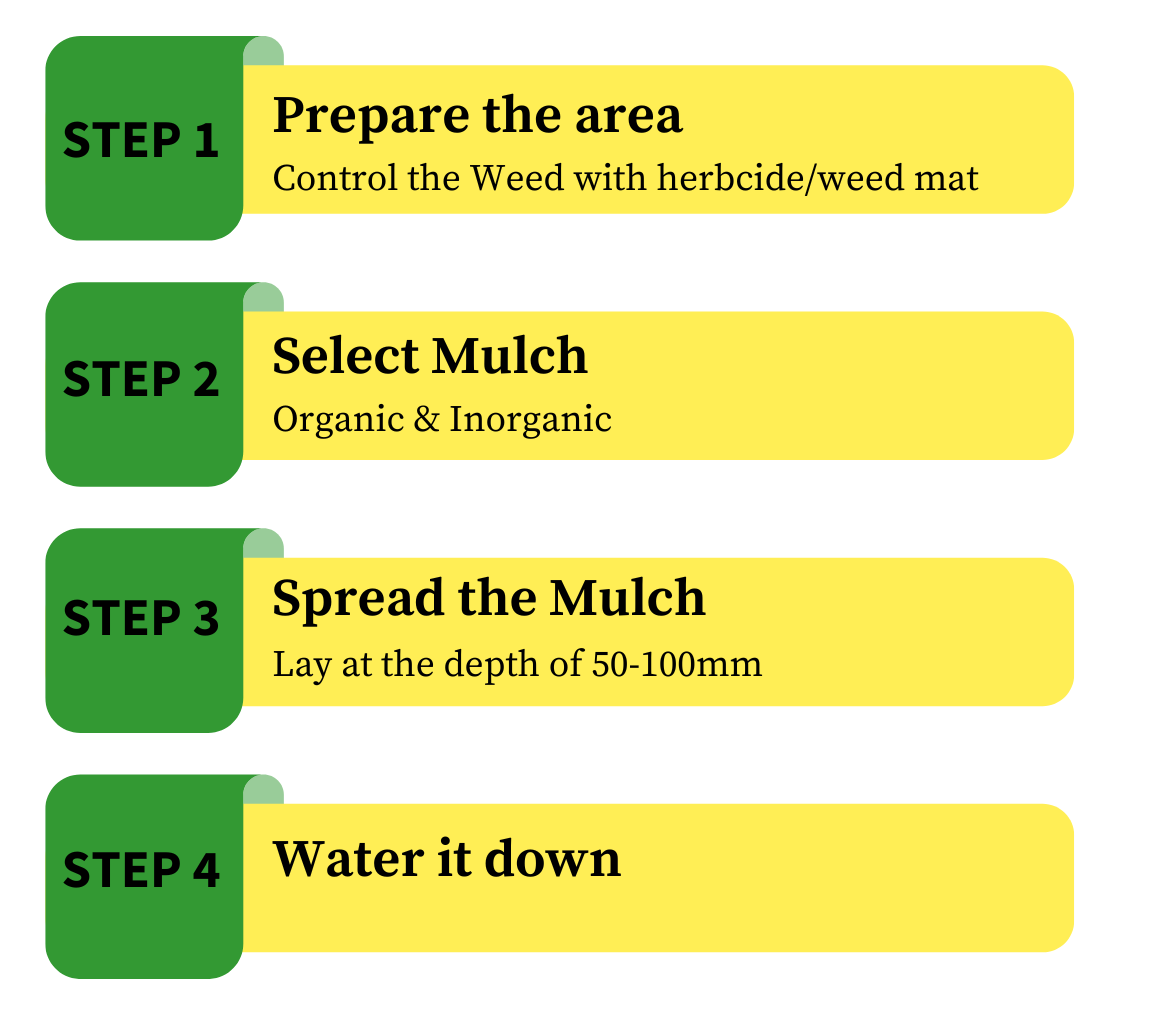

Types of Mulch
Organic mulches are made with natural materials. Popular examples are pine bark, moisture mulch, tree mulch, water-saver mulch, eucamulch, redwood, and blackwood mulch. Inorganic mulches includes material like pebbles, and decorative aggregates like Tuscan screenings. At Daisy's we offer a wide range of mulch to fit your particular project needs!

When to apply mulch
There is no specific time to apply mulch, but it is a good time to mulch:
- Before rain as the mulch locks in moisture,
- after planting to finish your garden and
- before summer to help protect your soil from the summer heat.

How to Mulch
1. Before mulching, remove the weeds either manually or by using herbicide. To help prevent more weeds from re-emerging, put down a barrier like weedmat, but the barrier can be something as simple as newspaper or cardboard.
2. Select the mulch – it can be organic or inorganic
3. Apply the right amount of mulch. We recommend you apply mulch to a depth of 50-100mm depth to get the best weed suppression. But don’t pile mulch up against the stems of the plants.
4. Water